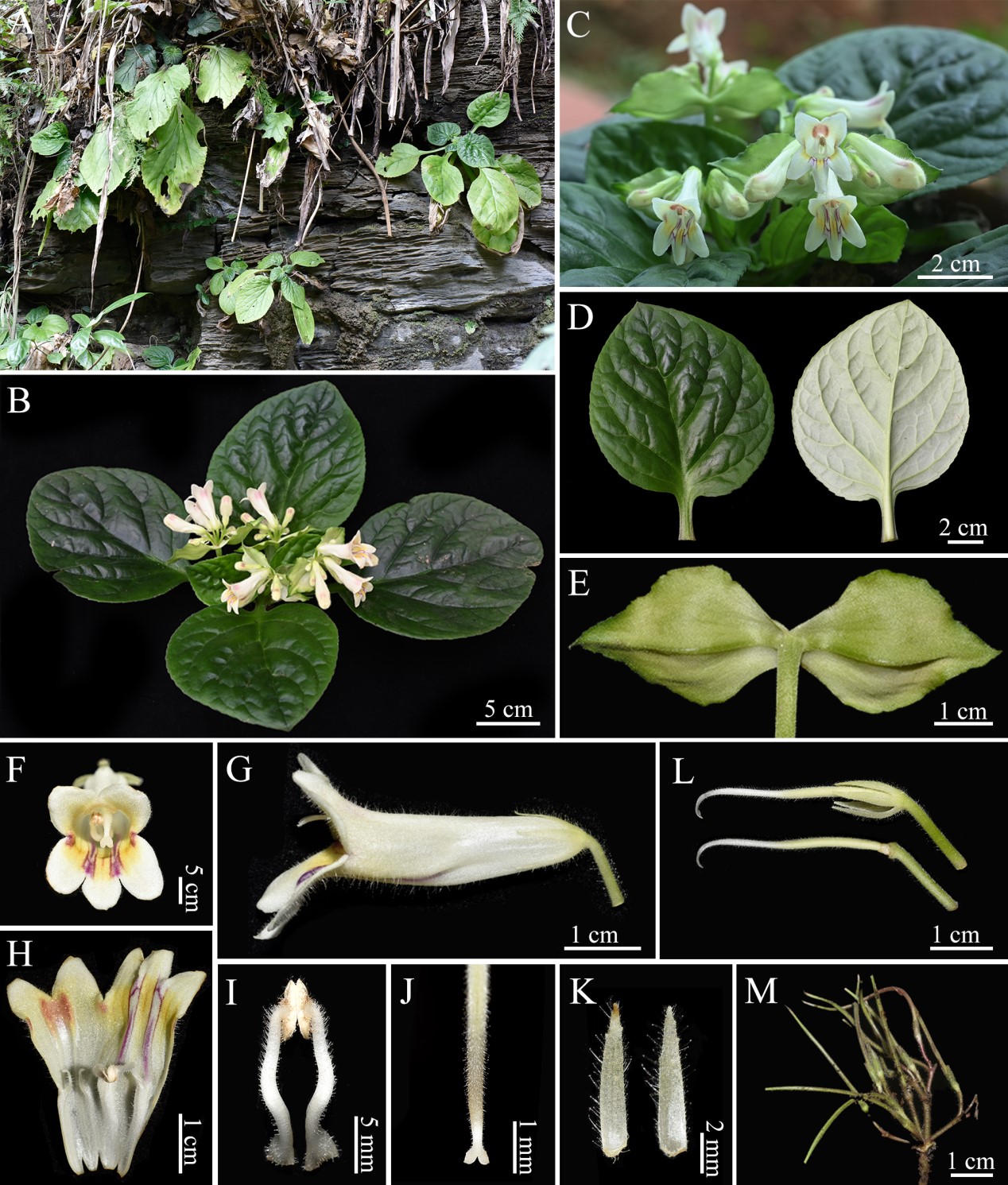
A research team has discovered and named a new species of the Gesneraceae family, Primulina nanlingensis, in the limestone karst region of northern Guangdong. This finding, published in PhytoKeys, adds a rare member to the rich diversity of plants in the Nanling Mountain Range.
The genus Primulina is the most diverse group within the Gesneriaceae family in China, with over 220 documented species in the country and more than 240 worldwide. The karst areas of southern and southwestern China serve as biodiversity hotspots for Primulina, with many species endemic to isolated habitats. Among them, the Nanling Mountain Range, known for its complex topography and varied soil conditions, enhances species diversity and endemism. Traditional taxonomic methods based on morphology have struggled with closely related species, but recent advances in molecular techniques provide new clarity in addressing these taxonomic challenges.
Research collaboration between the South China Botanical Garden (SCBG) and the Guangdong Shimentai National Nature Reserve has identified a likely new species of Primulina on limestone cliffs within the reserve in the Nanling Mountain Range.
The researchers collected specimens and molecular materials. The findings indicate that P. nanlingensis is morphologically similar to P. versicolor and P. pengii. Compared to P. versicolor, it has larger leaves with densely crenate margins, a notably lower number of flowers, ovate-lanceolate bracts with shallow serrations, calyx lobes bearing one to three teeth per side, and filaments that are densely glandular at both the base and tip, with the pistil also densely glandular-puberulent. In contrast to P. pengii, it exhibits a longer corolla, a pale yellow flower color, and distinct bract morphology. Molecular phylogenetic evidence further supports its status as an independent species.
Through comparative morphological studies, specimen verification, and molecular phylogenetic analysis, the plant was confirmed as a new species named Primulina nanlingensis after its discovery site, the Nanling Mountain Range.
Primulina nanlingensis is currently restricted to two limestone hills within the Shimentai National Nature Reserve in Yingde, Guangdong Province, where it exists as a small population. Following IUCN criteria, the research team assessed it as Near Threatened (NT) and recommended enhanced habitat protection measures.
"As a new member of Primulina, the discovery of P. nanlingensis not only enriches the floristic diversity repository of the Nanling region but also provides critical material for studying plant adaptive evolution mechanisms in karst landscapes," said Prof. CHEN Hongfeng from SCBG.
This study was financially supported by the Science and Technology Projects in Guangzhou and the Guangdong Flagship Project of Basic and Applied Basic Research.

Primulina nanlingensis J.C.Luo & H.F.Chen A. Plants in natural habitat; B. Habit in flowering; C. Cyme and frontal view of corolla; D. The adaxial and abaxial surface of leaf blades; E. Outside surface of bracts; F. Frontal view of corolla; G. Side view of corolla; H. Opened corolla showing stamens, staminodes and colour; I. Stamens; J. Stigma; K. Outside and inside surface of calyx lobes; L. Pistil with calyx lobes and pistil without calyx lobes; M. Infructescence.(Imaged by CHEN et al)

86-10-68597521 (day)
86-10-68597289 (night)

52 Sanlihe Rd., Xicheng District,
Beijing, China (100864)

